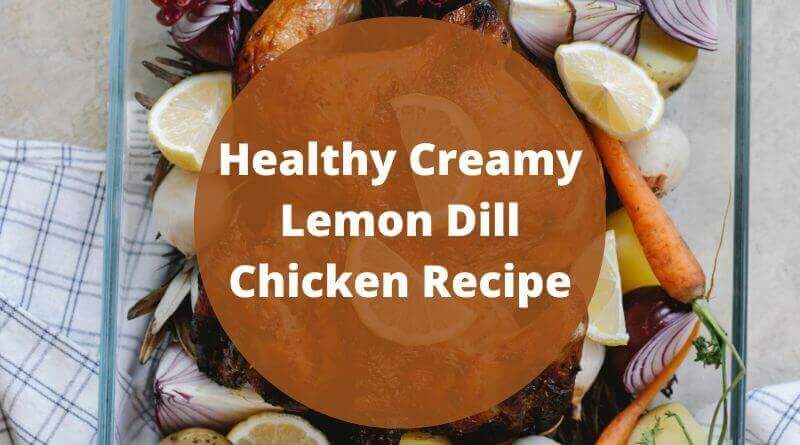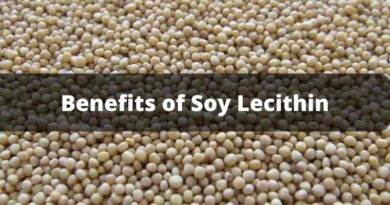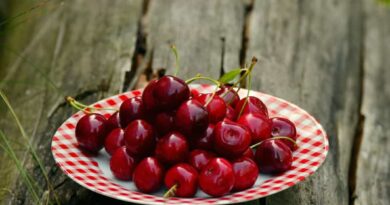Healthy Creamy Lemon Dill Chicken Recipe
Healthy and creamy aren’t two words that typically go hand in hand in the same recipe. It’s like a Venn diagram of food but you can only pick one, and there isn’t much overlap. This, however, is a situation where you can enjoy a creamy dish that scratches that rich, unctuous itch while at the same time keeping an eye on the calories and healthy diet. What’s not to like about that?
First things first, and you might have done this already, you’ll spot that there isn’t actually any cream in this dish. The creaminess still comes from dairy but in the form of milk. When combined with a little flour, lemon juice, and butter a thickening, decadent sauce begins to come together. Talking of sauce…
Table of Contents
How to Make Lemon Dill Sauce
Ingredients
- 1 cup chicken broth – if you opt for low sodium then you have more freedom over seasoning
- 1 cup milk – your choice of whole or 2%
- 2 TB freshly squeezed lemon juice – use whole lemons, you can always cut sections out for garnish
- 1 TB flour – all-purpose is fine
- 1 TB salted butter – if you only have unsalted, you can add salt accordingly to taste
- 3 TB freshly cut dill leaves – It’s one of those ingredients leaving you wondering what to do with dill, this is a great use of it!
Grab everything listed above and put it all together into a bowl. Whisk it together until they’re combined. Pout the sauce into a skillet, ideally this would be a skillet that you’ve just finished using to brown some chicken. The act of adding liquid and adding heat will deglaze the pan, adding deep caramelized flavor to the sauce as it cooks. You can be sure to fully deglaze the pan by gently scraping the bottom of it with a silicon or wooden spatula.
Stir the sauce continuously as it bubbles over medium heat. You’re looking to reduce it by about half. Be patient and try to avoid resorting to cornflour to thicken as this does slightly alter the overall flavor.
How to Cook Chicken Breast in a Pan
Cooking a chicken breast perfectly in a pan is a skill worth mastering if you’d like to have a varied recipe repertoire. Once you’ve learned how to do it properly the applications are in their thousands! For best results, you want to use a breast that still has the skin attached, but they’re not always easy to come by in modern grocery stores so skinless will do too.
The first step, if you want to delight in the slightly crisp golden brown texture you get on the outside of a well-cooked breast, you need to pat the joint dry using paper towels. If you don’t, the moisture will heat into steam and will stop any crispening.
Season both sides of the breast generously. I mean generously. Take 5 minutes and watch some professional chefs season the meat. I bet they use around 3 times as much seasoning as you’d think necessary. Trust me when I say getting the seasoning right on meat is a serious game changer. For years, I shied away from seasoning, thinking I’d ruin it. It turns out that I was just eating blander, under-seasoned food.
Now for the actual cook. Get your pan to medium-high heat. Add a good glug of oil. Lots of people avoid olive oil for the low smoke point, but it works so well with this recipe I’d go with it. Add the breast (skin down if you’re using skin-on breast) and try not to move it. Moving it breaks the connection with the pan and stops caramelization. A guide to the eye is to see the color change, when it reaches halfway, flip the breast.
The internal temperature for a chicken breast should reach 165°F. Judging this by eye and feel comes with practice, if you’re nervous invest in an instant-read digital thermometer for perfectly cooked chicken every time. Generally speaking, 3-4 minutes a side is a good starting point.
How to Make Our Fav. Healthy Creamy Lemon Dill Chicken
Ingredients
- 4 boneless chicken breasts
- 1 tsp kosher salt – Maldron is my personal favorite
- 1 tsp garlic powder
- 1 tsp onion powder
- ½ tsp freshly ground black pepper
- 2 tbsp olive oil
- Sauce as created above
Method
- Pat the chicken dry using paper towels.
- Mix the dry seasoning ingredients and combine well. Toss the chicken in the seasoning mix so that all the breasts are evenly and completely covered.
- Heat the oil in the pan and add the chicken, try to keep a gap between each breast.
- Cover all but a corner of the skillet to keep heat in but allow steam to escape.
- Brown the chicken until cooked (as detailed above)
- Remove the chicken to rest.
- Create the sauce as detailed above in the same pan you used to fry the chicken.
- Plate the chicken, pour over the sauce, and garnish.
Serve with new/baby potatoes and green veg/salad of your choice.
Key Takeaways
This is a delightfully light and healthy dish that genuinely feels like it shouldn’t be. It feels like you could be eating at a French restaurant with a lashing of cream. Enjoy it without the nagging feeling that you’re being bad!
- A digital thermometer is going to be your friend!
- This sauce would work brilliantly with other cuts of meat (pork especially) and some fish.
- Play around with accompaniments, lots would work alongside.
Recommended Articles:




